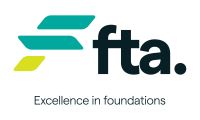Electricity
Menu
- Membership
-
Services & advice
- Building, planning & development
- Contracts & disputes
- Employment & wages
-
Health, safety & environment
-
Common hazards
- 10 critical risk events and controls
- Asbestos
- Bullying & harassment
- Chemicals
- Confined spaces
- Electricity
- Excavation
- Falling objects
- Fatigue
- Heat-induced illness
- Heights
- Manual tasks
- Mobile plant
- Noise
- Psychosocial Hazards at Work
- Power tools
- Severe weather
- Silica
- Site security
- Sun & ultraviolet rays
- Storage & housekeeping
- Underground & overhead services
- Health & Safety Representatives (HSRs)
- Incident management
- Mental Health
- Risk management
- Safety documents & signage
- Safety health checks
- WHS self assessment tool
- COVID-19
-
Common hazards
- Laws, codes & regulations
- Licensing
- Members Legal
- Products
- Training
- What's on
- News & publications
- Homeowners
- About
- Contact
- Terms & conditions
Electricity can be a serious hazard on construction sites because uncontrolled contact with it can result in death.
Overhead or underground service wiring, temporary construction wiring, power machinery and hand tools, and internal in-situ wiring on sites undergoing refurbishment or renovation are all sources of electricity.
As an employer, it's your responsibility to eliminate or reduce electrical hazards and it’s essential that all workers are trained to identify electrical risks in the workplace. Working with electricity is covered under the following legislation:
- Electrical safety legislation
- Electrical Safety Codes of Practice
- Australian Standard for electrical installations on construction and demolition sites
- Carrying out work in or entering domestic roof spaces
Planning and risk assessment
First you need to identify sources of electrical hazards by conducting a risk assessment.
These are some steps to take before starting work:
- Determine how the site will be supplied with power, for example via overhead or underground power, existing or temporary switchboards, or generators
- Ask subcontractors to provide evidence of test and tag registers
- Liaise with authorities, such as 'Before you dig' and get safety advice from network owners
- If working on or near energised electrical installations or services, such as overhead power lines, you must produce a safe work method statement (SWMS) before any work begins. This also includes work that has the potential to interact with live power cables, including those within wall and ceiling cavities.
Control measures
Hierarchy of Controls
Use the following Hierarchy of Controls to determine what level of control you need to manage the risks associated with electrical hazards.
- Elimination – Remove the source of power, for example consult with the network owner to have overhead power lines de-energised during construction
- Substitution – Use battery powered instead of mains powered tools
- Engineering controls – Limit movement of plant with mechanical stops to prevent access within the exclusion zone of power lines
- Administrative controls – Get safety advice from network owners, produce Safe Work Method Statements, use visual indicators such as tiger tails and testing registers
- Personal protective equipment – wear insulating gloves and rubber soled shoes, and use rubber insulating mats.
Internal and temporary wiring
Temporary construction wiring should only be installed by a licenced electrician, under the Wiring Code.
If a site is being renovated or refurbishment, look for any internal wiring and isolate the power to prevent workers coming into contact with live cables inside wall or ceiling cavities.
Power lines
Restrictions associated with working near power lines are outlined in the Electrical Safety Regulation.
You must maintain a minimum exclusion zone of three metres when working near live overhead power lines of up to 132kva. If you identify overhead power at the site and work will encroach on the exclusion zone, contact the network owner, such as Energex or Ergon Energy, for safety advice.
You can be fined for failing to identify risks or implement control measures when working near overhead and underground power.
Power tools and leads
The most obvious but often overlooked source of electrical shock is misused or mishandled electrical equipment.
Ensure all electrical items are inspected for damage before use and also test and tag them approximately every three months.
Some measures that can reduce the potential for damage include running leads off the ground on insulated hooks or stands. and avoiding high traffic areas and running over sharp edges.
Need more information?
If you haven’t found the answer to your questions on our website, give us a call or email us.





